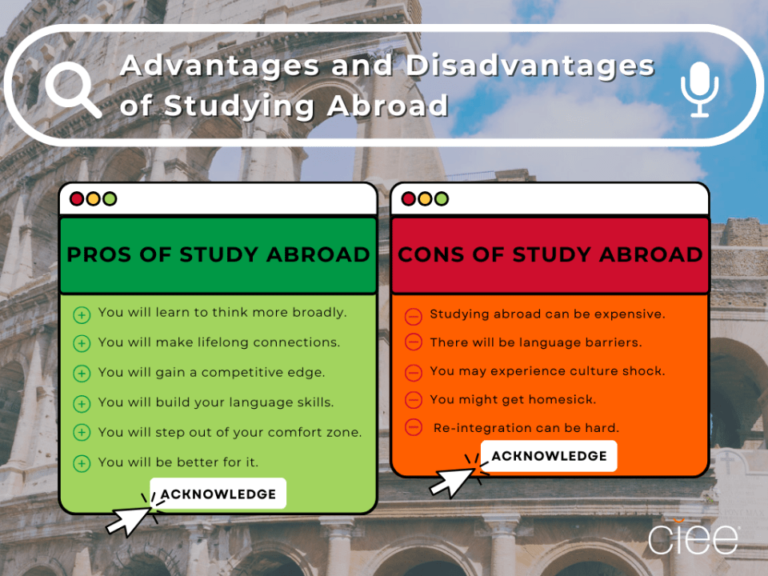The Benefits of Group Study Sessions
Top Study Techniques for Visual Learners
Visual learners thrive when they can see and visualize information. They often retain information better through charts, diagrams, and other visual aids. Understanding this learning style is crucial for both students and educators in optimizing study techniques. In this article, we will explore effective study methods tailored specifically for visual learners, ensuring a comprehensive approach to enhance learning and retentio1. Understanding Visual Learning
Visual learning is one of the three primary learning styles, alongside auditory and kinesthetic learning. Visual learners prefer to use images, pictures, diagrams, and other visual elements to process information. By leveraging visual stimuli, they can improve comprehension and recall, making it crucial for educational strategies to cater to these preferences.
Importance of Visual Learning
Recognizing the significance of visual learning can help students maximize their study effectiveness. Research shows that incorporating visual elements can improve retention rates by up to 65%. This statistic underscores the necessity of adapting study techniques to suit visual learners’ needs.
2. Key Characteristics of Visual Learners
Visual learners often exhibit specific traits that influence their study habits:
- Strong Spatial Awareness: They can easily visualize spatial relationships and navigate through their environment.
- Preference for Visual Aids: Charts, graphs, and images resonate more with them than text-heavy information.
- Creative Expression: Many visual learners excel in artistic pursuits and prefer expressing their thoughts visually.
- Difficulties with Verbal Instructions: They may struggle to follow along with purely auditory instructions or lectures.
Understanding these characteristics can help tailor study strategies that align with their strengths.
3. Effective Study Techniques for Visual Learners
3.1 Mind Mapping
Mind mapping is a powerful visual technique that helps in organizing information hierarchically. By creating a mind map, visual learners can visually represent relationships between concepts.
How to Create a Mind Map:
- Start with a Central Idea: Write the main topic in the center of a page.
- Branch Out: Draw branches from the central idea to represent subtopics.
- Use Keywords: Write keywords or short phrases on each branch.
- Incorporate Images: Add images or symbols to make connections clearer.
- Color Coding: Use different colors for different branches to enhance memory retention.
3.2 Color-Coding
Color-coding is an effective technique for organizing notes and materials. By using different colors for different categories of information, visual learners can quickly identify and recall relevant data.
Tips for Effective Color-Coding:
- Assign Colors to Themes: Use specific colors for different subjects or themes.
- Highlight Key Points: Highlight important information in a distinctive color.
- Create a Legend: Develop a legend to remember what each color represents.
3.3 Diagrams and Infographics
Diagrams and infographics present complex information in an easily digestible format. Visual learners can benefit greatly from visual representations of data and concepts.
Creating Effective Diagrams:
- Use Flowcharts: Flowcharts can simplify processes and show relationships between ideas.
- Develop Infographics: Combine text and visuals to convey information succinctly.
- Label Clearly: Ensure all parts of the diagram are labeled for clarity.
3.4 Flashcards
Flashcards are a classic study tool, especially effective for visual learners. They can use images or symbols on one side and text on the other to reinforce memory.
How to Maximize Flashcard Use:
- Incorporate Visuals: Add relevant images or symbols alongside text to enhance recall.
- Use Digital Flashcards: Applications like Anki or Quizlet allow for easy customization and access.
- Regular Review: Schedule regular review sessions to reinforce learning.
3.5 Videos and Multimedia
Visual learners can greatly benefit from engaging video content that explains concepts through animation, demonstrations, or visual storytelling.
Finding Quality Resources:
- Educational YouTube Channels: Many channels offer in-depth explanations of various subjects.
- Documentaries: Use documentaries that relate to the study topic for a more comprehensive understanding.
- Interactive Multimedia: Websites and apps that offer interactive learning experiences can enhance engagement.
3.6 Charts and Graphs
Charts and graphs visually represent data and trends, making them easier to understand for visual learners.
Creating Effective Charts:
- Use Clear Labels: Ensure that all axes and data points are clearly labeled.
- Choose the Right Type: Select the appropriate chart type (bar, line, pie) based on the data being presented.
- Color Variations: Use color variations to distinguish between different data sets.
3.7 Visual Note-Taking
Visual note-taking combines traditional note-taking with visual elements, enhancing understanding and retention.
Strategies for Visual Note-Taking:
- Doodles and Sketches: Incorporate doodles or sketches to represent concepts visually.
- Use Symbols: Develop a system of symbols to represent common ideas or themes.
- Highlight and Underline: Use colors to highlight and underline key information.
4. Incorporating Technology
Technology offers a range of tools that cater to visual learners. Leveraging these resources can significantly enhance study effectiveness.
Recommended Tools and Apps
- Mind Mapping Software: Tools like XMind or MindMeister allow for digital mind mapping.
- Note-Taking Apps: Apps like Notability or GoodNotes let users combine handwriting and images.
- Flashcard Apps: Digital flashcard platforms like Anki and Quizlet help create interactive learning materials.
5. Creating an Effective Study Environment
A conducive study environment can significantly impact learning outcomes. Visual learners benefit from spaces that stimulate their visual senses.
Tips for an Ideal Study Space
- Organized and Clutter-Free: Keep the study area organized to minimize distractions.
- Incorporate Visuals: Use posters, charts, and visual aids related to the study material.
- Adequate Lighting: Ensure good lighting to avoid straining the eyes while studying.
6. Conclusion
Understanding and leveraging the unique strengths of visual learners can greatly enhance their educational experience. By employing techniques such as mind mapping, color-coding, and multimedia resources, visual learners can improve their comprehension and retention of information. Additionally, incorporating technology and creating an effective study environment further supports their learning journey. With these strategies in hand, visual learners can approach their studies with confidence and success.
By implementing these study techniques, visual learners can transform their educational experiences, making learning not only more effective but also more enjoyable. Whether you’re a student or an educator, recognizing and utilizing these methods can lead to improved outcomes and a deeper understanding of the material at hand.
The Benefits of Group Study Sessions
Group study sessions have become a popular method among students looking to enhance their learning experience. These collaborative environments not only provide a platform for shared knowledge but also foster social interaction and motivation. In this article, we will explore the various benefits of group study sessions, effective strategies for maximizing their potential, and tips for creating a successful study group.
Table of Contents
- Understanding Group Study Sessions
- Key Benefits of Group Study Sessions
- 2.1 Enhanced Learning
- 2.2 Improved Motivation and Accountability
- 2.3 Development of Communication Skills
- 2.4 Exposure to Diverse Perspectives
- 2.5 Effective Problem Solving
- Tips for Effective Group Study Sessions
- Overcoming Challenges in Group Study
- Conclusion
1. Understanding Group Study Sessions
Group study sessions involve gathering a small group of students to study together, share knowledge, and discuss course materials. These sessions can take place in various settings, such as libraries, classrooms, or online platforms. The primary goal is to collaboratively engage with the material, which can lead to deeper understanding and retention.
Importance of Collaboration
Collaboration is a key aspect of learning. When students come together, they can pool their resources, skills, and knowledge to enhance the overall study experience. This shared effort often leads to better results than studying alone.
2. Key Benefits of Group Study Sessions
2.1 Enhanced Learning
One of the most significant advantages of group study is the enhancement of learning outcomes. Students often grasp concepts more effectively when they explain them to peers. Teaching others can reinforce one’s understanding and highlight any gaps in knowledge.
Research Findings: Studies have shown that students who engage in group study sessions perform better on exams and assignments compared to those who study alone.
2.2 Improved Motivation and Accountability
Studying in a group can significantly boost motivation. When students commit to a study schedule with peers, they are more likely to stay on track and hold each other accountable. The presence of others can create a sense of urgency and responsibility, encouraging participants to prepare adequately.
Strategies to Enhance Motivation:
- Set clear goals for each session.
- Celebrate small achievements together.
2.3 Development of Communication Skills
Group study sessions provide an excellent opportunity to improve communication skills. Students must articulate their thoughts clearly, listen actively, and engage in discussions. These skills are not only valuable in an academic setting but are also essential for future career success.
Key Communication Skills Developed:
- Active listening
- Articulation of ideas
- Constructive feedback
2.4 Exposure to Diverse Perspectives
In a group study setting, students encounter various perspectives and approaches to problem-solving. This diversity can enrich discussions and encourage critical thinking. Exposure to different viewpoints fosters a deeper understanding of the subject matter.
Benefits of Diverse Perspectives:
- Enhanced creativity in problem-solving.
- Greater empathy and understanding among peers.
2.5 Effective Problem Solving
Collaborative study sessions often lead to more effective problem-solving. When faced with challenging topics, group members can brainstorm solutions together, pooling their knowledge and skills. This collaborative effort can lead to innovative solutions and a stronger grasp of the material.
Group Problem-Solving Techniques:
- Brainstorming sessions.
- Role-playing different scenarios.
3. Tips for Effective Group Study Sessions
To maximize the benefits of group study, consider the following tips:
3.1 Set Clear Goals
Before beginning a study session, establish clear objectives. Determine what topics need to be covered and what outcomes you hope to achieve. This focus will keep the group on track and ensure that everyone benefits from the session.
3.2 Establish Ground Rules
Creating ground rules can help maintain a productive atmosphere. Discuss expectations regarding participation, respect, and time management. Setting these guidelines fosters a positive and focused environment.
3.3 Rotate Roles
Assigning different roles within the group can enhance engagement and accountability. Roles can include a facilitator, timekeeper, note-taker, and presenter. Rotating these roles ensures that everyone actively participates and contributes.
3.4 Utilize Technology
Leverage technology to enhance group study sessions, especially if members cannot meet in person. Tools like video conferencing, collaborative document editing, and study apps can facilitate communication and resource sharing.
3.5 Keep It Engaging
Incorporate varied activities to keep the sessions engaging. Use quizzes, games, or multimedia presentations to break the monotony and encourage participation.
4. Overcoming Challenges in Group Study
While group study sessions offer numerous benefits, they can also present challenges. Here are some common obstacles and strategies to overcome them:
4.1 Distractions
Distractions can derail the productivity of a study group. To combat this, choose a quiet location and establish ground rules regarding phone usage and side conversations.
4.2 Unequal Participation
Sometimes, certain group members may dominate discussions while others remain passive. To ensure equal participation, actively encourage quieter members to share their thoughts and contributions.
4.3 Scheduling Conflicts
Coordinating schedules can be difficult, especially with busy academic lives. Use scheduling tools or apps to find common availability and set regular study sessions.
4.4 Conflict Resolution
Differences in opinions can lead to conflicts within the group. Encourage respectful dialogue and remind members of the shared goal of learning. If disagreements arise, take a break and reconvene with a fresh perspective.
5. Conclusion
Group study sessions offer a multitude of benefits that can enhance learning, motivation, and communication skills. By fostering collaboration, exposing students to diverse perspectives, and promoting effective problem-solving, these sessions can significantly improve academic outcomes. With proper planning and commitment, study groups can transform the learning experience into a dynamic and enriching journey.
By understanding the advantages and implementing effective strategies, students can harness the power of group study sessions to achieve their academic goals and build lasting connections with peers. Whether you’re preparing for exams or collaborating on projects, the benefits of group study are undeniable and can set the stage for success.





